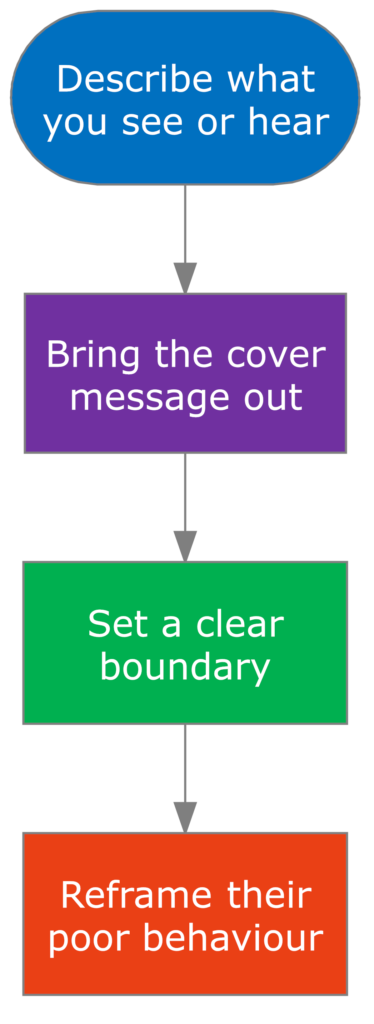Psychologists recommend ‘calling out’ passive aggressive people on their tactics. How can you do this without creating conflict?
There are four steps involved in calling out poor behaviour assertively and calmly.
 1. Describe what you see or hear
1. Describe what you see or hear
Your aim in this first step is to present ‘evidence’ of the passive aggressor’s tactics. Make this clear and irrefutable. Describe only what you can see or hear.
For example “I looking up at the ceiling when Maria spoke at the meeting. When you responded to her, your voice sounded sarcastic.”
2. Bring the covert message into the open
Passive aggression is all about sending unspoken messages. These are expressed through voice-tone, contemptuous body language and facial expressions. Often, the words spoken by a passive aggressive person are perfectly reasonable. It is the meta message which is offensive or hurtful. To challenge the covert message, you need to make it explicit.
For example, say “Your behaviour sent the message that you had no respect for Maria’s opinion.”
3. Set a clear boundary
Be firm and clear. Reinforce your boundary by framing it in terms of policy or cultural norms. Then outline what you expect to see or hear in future. Keep your boundary statement focussed on behaviour.
For example, “As you know, we have a code of conduct here. It says that everyone must be treated with respect. In the future, I expect you to look at Maria when she speaks. I would also like to hear you responding in a polite tone of voice.”
4. Reframe their poor behaviour
“I know you care deeply about this project and want to move it forward. It might be irritating to hear other opinions on how to get started. But it’s important that the team works together on this. We’ll get a better outcome if disagreements are sorted out respectfully.”
Need advice on what to say? Ask Eleanor now. Send your question and we’ll answer it in a future blog post.
[convertkit form=5135167]
